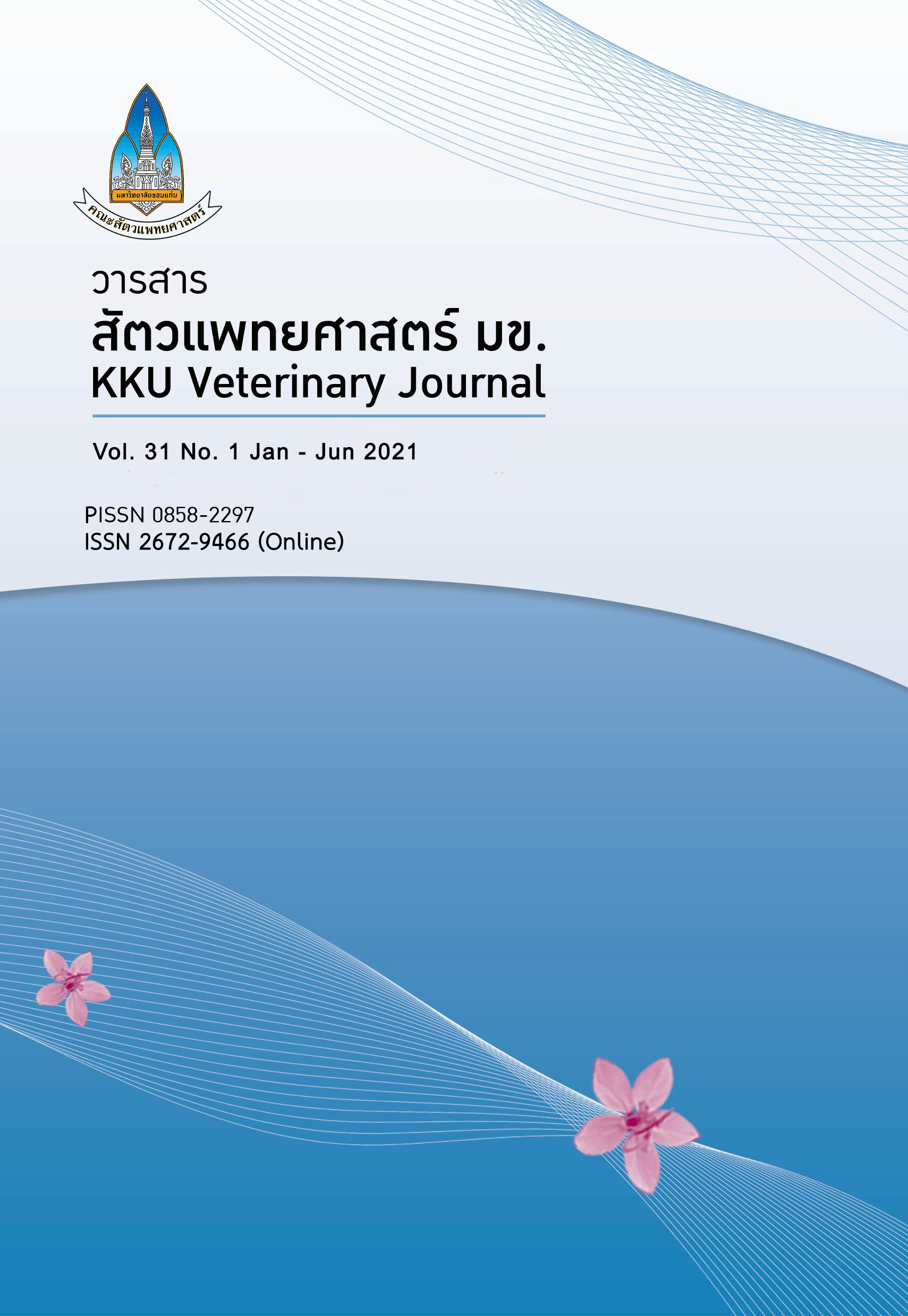Guidelines of feed supplementation with concentrate diet on production performance, feed intake and hematology in beef cattles
Main Article Content
Abstract
Objective: To obtain a guideline of supplementation with concentrated feed on production efficiency, feed intake and hematology value in beef cattle
Materials and methods: A Completely Randomized Design (CRD) was used in which 30 animals were fed. All cows were given rice straw as a roughage source. The concentrated feed was added to fermented cassava residue with usable energy and protein based on body weight at 1.5% BW as follows: 1) concentrate 16% CP: supplemented fermented cassava residue (100: 0) 2) concentrate 16% CP: supplemented fermented cassava residue (50:50) 3) concentrate 16% CP: supplemented fermented cassava residue (30:70). Data of changes in body weight, feed intake, hematology values were collected and analyzed data by software packages (SAS, 1996).
Results: The results of the study showed that ADG, FCR were not statistically different (P> 0.05) among the three treatments fed beef cows. While, Total DM intake, rice straw intake, concentrate intake in term of kg, g kg-1BW0.75 was highest in beef cattle fed with concentrate 16% CP: supplemented fermented cassava residue (30:70) but Total DM intake, rice straw intake, concentrate intake in term of %BW was no statistically difference (P> 0.05). In addition, the four treatment fed beef cattle did not differ statistically for BUN and Hct (P> 0.05).
Conclusion: This study concluded that feeding concentrate 16% CP: supplemented fermented cassava residue (30:70) resulted in an increase in the amount of intake and supplementation with the concentrated diet had no effect on production efficiency and hematology value
Keywords: Beef cattle, production performance, hematology
Article Details
References
Ahola JK, Enns RM, Holts T. 2006. Examination of potential method to predict pulmonary arterial pressure score in beef cattle. Anim Sci J 84, 1259-1264.
Crocker CL. 1967. Rapid determination of urea nitrogen in serum or plasma without deproteinization. Am J Med Technol 33, 361-365.
Hammond AC. 1983. Effect of dietary protein level, ruminal protein solubility and time after feeding on plasma urea nitrogen and the relationship of plasma urea nitrogen to other ruminal and plasma parameters. Anim Sci J 57, 435.
Kaneko JJ, Harvey JW, Bruss ML. 1997. Clinical Biochemistry of Domestic Animal. 5th Edition. Academic Press Inc., New York.
Khampa S, Chuelong S, Kosonkittiumporn S, Khejornsart P. 2010. Manipulation of yeast fermented cassava chip supplementation in dairy heifer raised under tropical condition. Pakistan J Nutr 9, 950–954.
Norrapoke T, Phongchongmit T, Cherdthong A, Nitipot P. 2018. Using of urea and molasses fermented cassava pulp on feed intake, and nutrient digestibility and blood biochemical value in beef cattle. Khon Kaen Agr J 46 Suppl.1, 25-32.
Norrapoke T Pongjongmit T, Cherdthong A, Phakachoed N. 2018. Using cassava pulp fermented with additives on feed intake and digestibility of beef cattle. Khon Kaen Agr J 46 Suppl.1, 590-596.
Pongjongmit T, Norrapoke T, Dinrobram S. 2020. Influence of additive fermented cassava pulp with residues from noodle factory on nutritive values, feed intake, and nutrient digestibility in beef cattle. Khon Kaen Agr J 46, 1406-1413
Prantana P. 2005. Knowledge about cattle series 3 varieties And selection of cows. Neon Book Media. Nonthaburi.
Preston RL, Schnakanberg DD, Pfander WH. 1965 Protein utilization in ruminants. I. Blood urea nitrogen as affected by protein intake. J Nutr 86, 281–288.
SAS. 1996. SAS/STAT User’s Guide: Version 6. 12. 4th Edition. SAS Institute Inc., Cary, NC.
Thai Tapioca Starch Association. 2009.Tapioca Starch Industry. [Cited, 2012 Feb 15]. Available from: https://goo.gl/uGY19S
Wanapat M. 1990. Ruminant nutrition. Funny Publishing Partnership, Bangkok.


